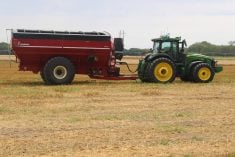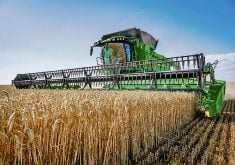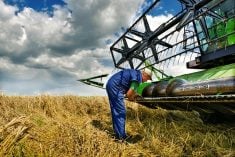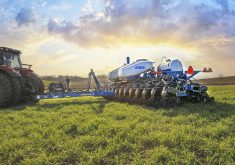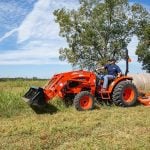An Ontario farmer welded a fifth-wheel pin to the bottom of his sprayer and installed a receiver on the trailer to make his spraying system more efficient.
Tom Schuurmans said the hitch shaves at least five minutes off each load and unload of his sprayer.
He said his family’s dairy farm near Elmira, Ont., needs to make field operations as slick as possible because of the daily work demands in the barn.
“It’s (fifth pin) mounted right under the front axle, and then it drops down about eight inches to clear the weight block, and the fifth wheel plate is mounted on 14-inch I-beam and they are mounted or bolted down directly to the step deck I-beams,” Schuurmans said.

“You can feel it snap into place. You have to drop the air in the trailer and the sprayer so that the airbags are all the way down. To unload it, you pull the fifth wheel plate locking handle and then just back right out.”
He said the idea came from another farmer, Mark McClean, but his design is a little different.
“He has a truck and tender; I just made it on a step deck design,” Schuurmans said.
“We got a local welding engineer, OJB Industries, to build the ramps for the sprayer trailer, and then the fifth wheel plate was just me. It was pretty simple.”
The ramps for the sprayer wheels are to the side and below the trailer deck, so there is little chance the sprayer can shift during transport.
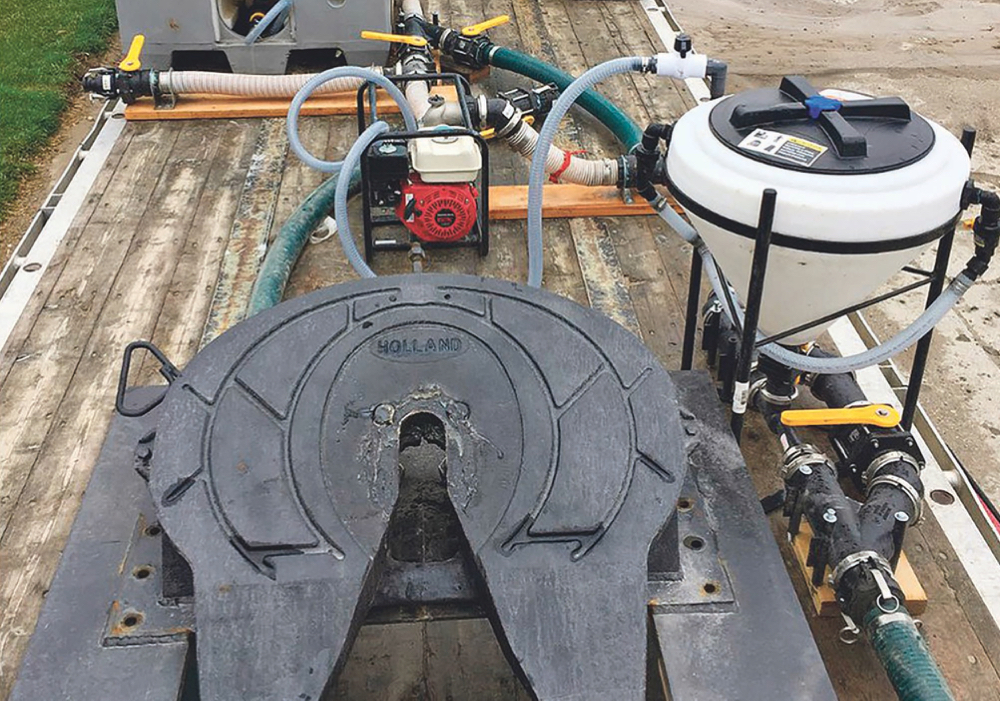
“The way the ramps are designed, there is one inch on either side of the tire. That trailer won’t shift side to side at all. You’d have to flop that trailer over to get that sprayer off,” Schuurmans said.
“It’s designed to have as little play as possible.”
He said for longer hauls he would throw chains on the back to avoid offending people who can’t see the load is secure.
“I’m not 100 per cent sure it’s (department of transportation) approved, but the way I look at it is, well what’s holding a 80,000 pound transport trailer full of grain? It’s the exact same thing and I’m only 10 tonnes, so 20,000 lb.,” Schuurmans said.
Read Also
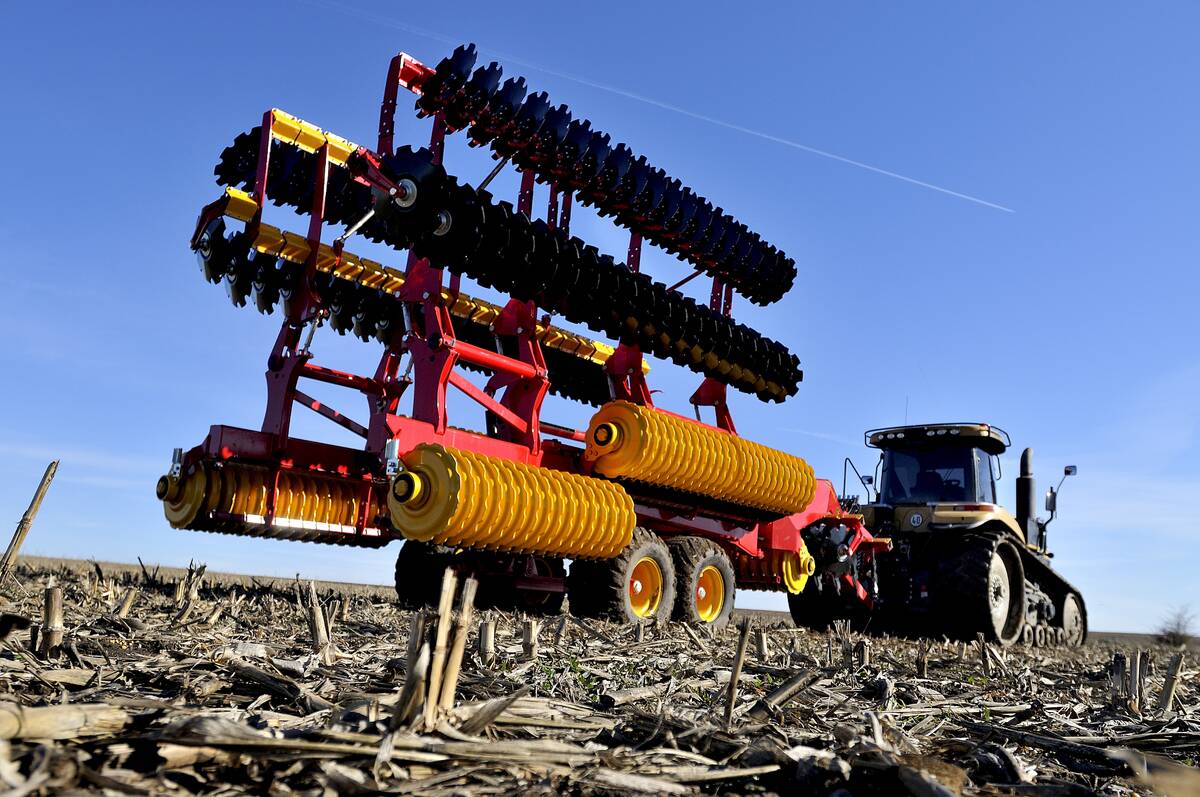
Evolution of European equipment manufacturers runs deep
A look at how Lemken and Väderstad have evolved from their traditional offerings of tillage equipment to include planting and seeding equipment in their lineups.





